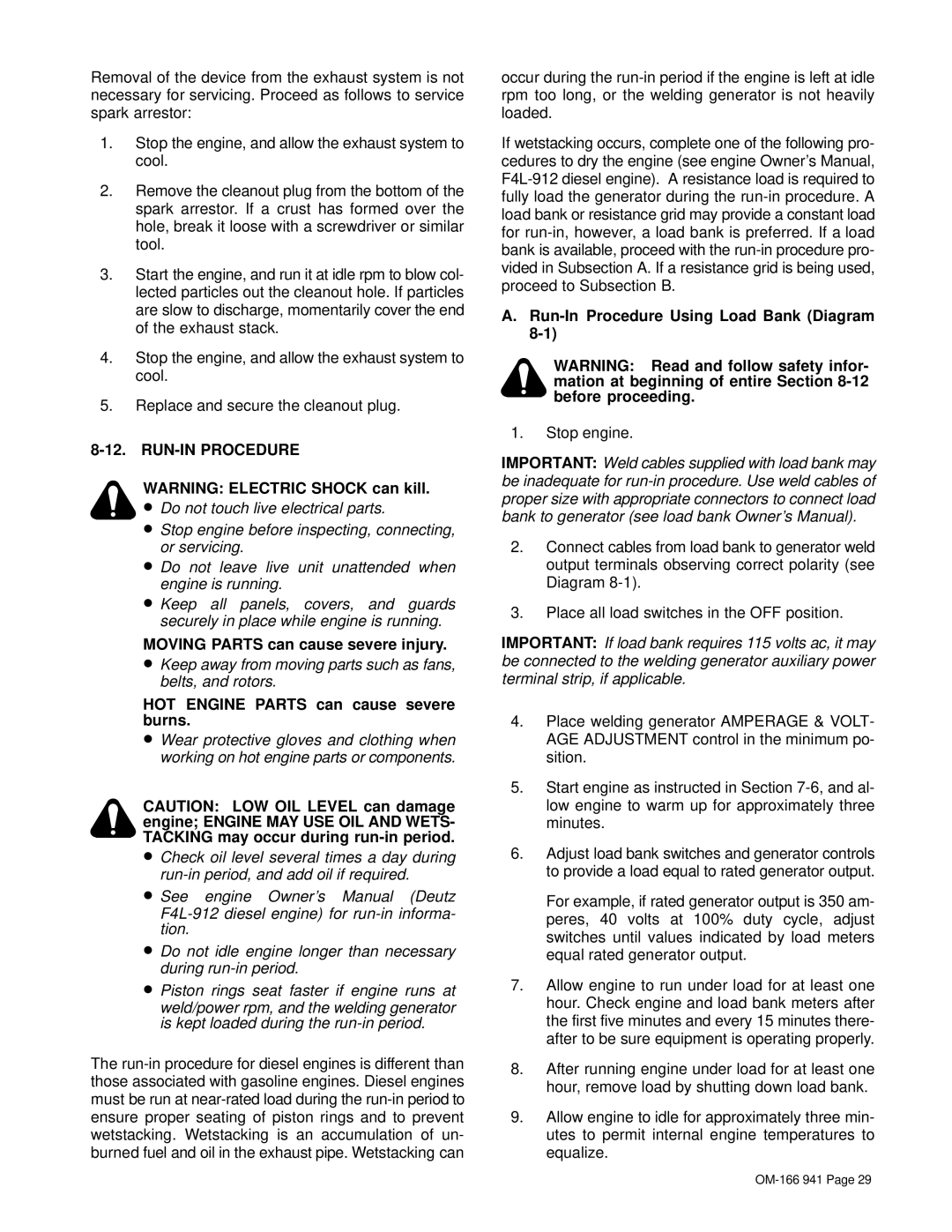CBI 801D specifications
The Miller Electric CBI 801D is a robust and sophisticated multi-process welder, designed for maximum efficiency and versatility in various welding applications. This machine stands out due to its combination of advanced technology and user-friendly design, making it suitable for both seasoned professionals and those new to welding.One of the key features of the CBI 801D is its ability to perform multiple welding processes, including MIG, TIG, and stick welding. This multi-functionality allows users to tackle a wide range of welding tasks, whether they are working on thin sheet metals or heavy fabrication. The seamless transition between processes is designed to enhance productivity and reduce downtime.
The CBI 801D is powered by Miller's innovative Auto-Set technology, which automatically adjusts the machine settings based on the material type and thickness. This feature simplifies the setup process, allowing welders to focus more on their work rather than on configuring the machine. Additionally, the user interface is designed for simplicity, featuring intuitive controls that are easy to navigate.
In terms of performance, the CBI 801D delivers impressive output, with a maximum welding output of 800 amps. This substantial power provides the capability to weld thicker materials with greater efficiency, making it an ideal choice for industrial applications. The built-in advanced cooling system ensures optimal performance during extended use, preventing overheating and maintaining consistent weld quality.
Durability is another hallmark of the Miller Electric CBI 801D. The machine is constructed with high-quality materials, providing resilience against tough working conditions. Its compact and portable design allows for easy transport to various job sites, while the built-in handles are designed for convenience.
Moreover, the CBI 801D features advanced digital readouts for real-time monitoring of welding parameters. This not only enhances precision but also allows welders to make necessary adjustments on the fly. The machine is also compatible with various accessories, which further expand its functionality and adaptability across different welding scenarios.
In summary, the Miller Electric CBI 801D is a powerful and versatile welding machine, offering multi-process capabilities, user-friendly features, and a robust design. Its combination of advanced technology and reliable performance makes it a top choice for professionals looking for efficiency and precision in their welding tasks. Whether for fabrication, repair, or maintenance, the CBI 801D proves to be an invaluable asset in any welding operation.

